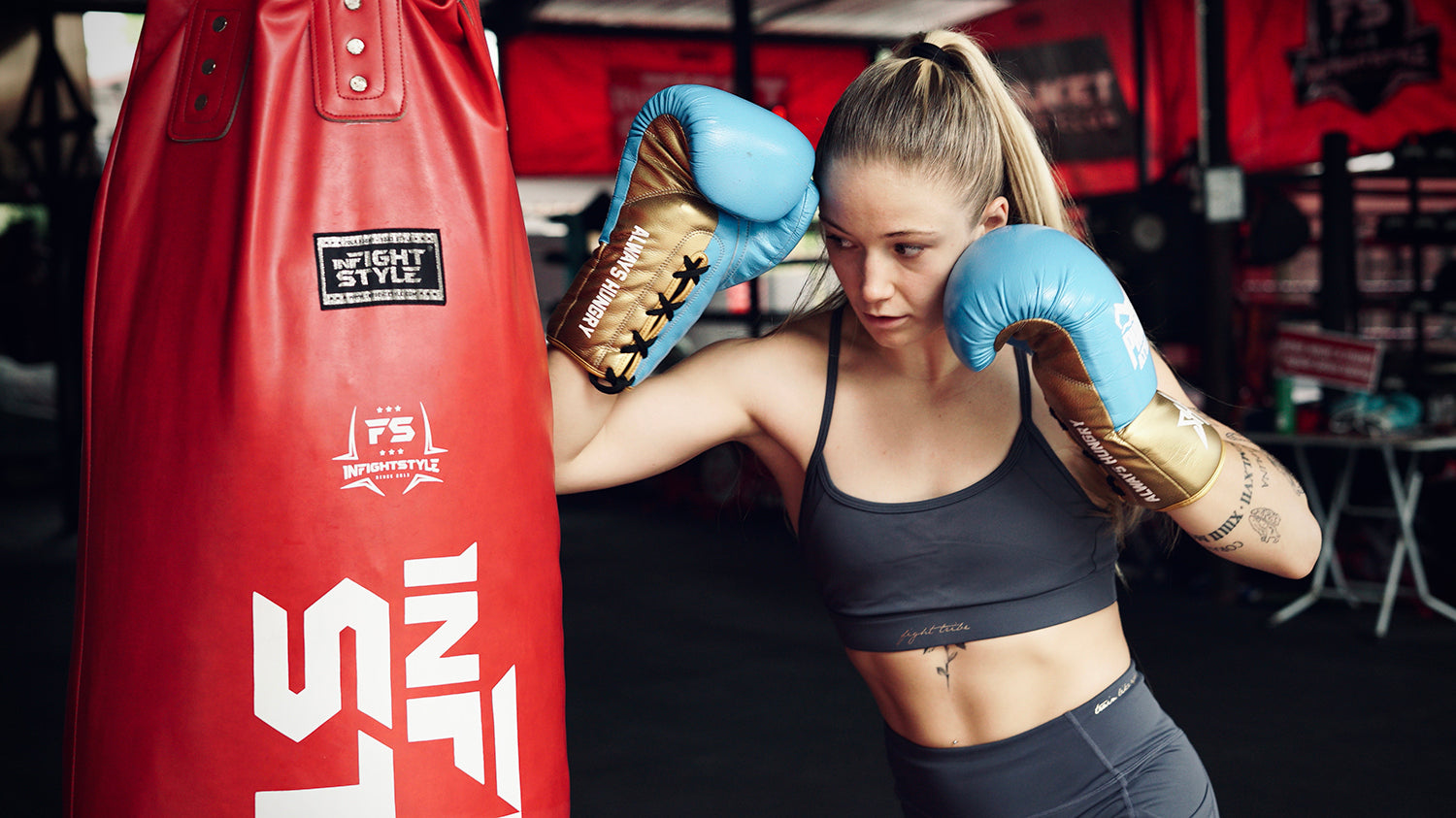
How to Train Around Your Menstrual Cycle
Our bodies undergo a complex hormonal cycle each month, impacting various aspects of our physical and emotional well-being. This generally means we can't train the same way men do i.e. we can't do the same type of training every single day, at the same intensity, without potentially impacting our health. Understanding these fluctuations can help us modify our training to achieve better results while prioritising our safety and overall health. So let's see how our cycle works and what we can consider doing to continue training effectively without hurting our progress and health!
1. Menstrual Phase (Days 1-7)
The menstrual phase marks the start of the cycle, triggered by the shedding of the uterine lining. During this time, hormone levels, especially estrogen and progesterone, are at their lowest. Some women may experience discomfort, fatigue, or mood swings. Basically it's pretty much the toughest window to train in, because we're bleeding, cramping and physically not at 100%.
So what can we do?
Given the lower hormone levels and potential discomfort, it's usually better to bring down the intensity of training, perhaps working on things like defence or movement so we don't potentially injure ourselves through fatigue. It's also a great time to add in more stretching and yoga to help ease any pain.
2. Follicular Phase (Days 8-14)
The follicular phase begins after menstruation and lasts until ovulation. Estrogen levels gradually increase during this time, promoting a boost in energy, focus, and stamina. Additionally, higher estrogen levels can enhance muscle protein synthesis, potentially improving strength gains.
So what could we do?
During this phase, we can take advantage of the increased energy levels to up the intensity. Plus with those higher estrogen levels, it's a great time to focus on strength and conditioning!
3. Ovulation Phase (Day 14)
Ovulation occurs around day 14 of the menstrual cycle, characterized by the release of an egg from the ovary. Estrogen levels peak during this phase, and some women may experience a surge in testosterone, potentially leading to heightened athletic performance.
So what can we do?
With increased hormonal support, a lot of women may feel more motivated and experience better coordination and reaction times. Utilize this phase for training at your full potential, go back to working 100% and feel free to focus on everything - speed, power, agility!
4. Luteal Phase (Days 15-28)
After ovulation, the luteal phase sets in, and progesterone levels rise. This phase is also characterized by increased body temperature and potential premenstrual symptoms, like bloating, mood swings, and fatigue.
So what could we do?
In the luteal phase, it's crucial to focus on supporting hormonal balance again. You're not quite menstruating yet so you'll still be able to train at a fairly decent intensity, but many women can get bad PMS symptoms during this phase so cool it down if you're experiencing pain like bad bloating and cramps. This is a great time to use light cardio to maintain your cardio endurance before the Menstrual Phase arrives again.
It's important to remember that every woman's hormonal cycle is unique, and factors like age, lifestyle, and overall health can influence these fluctuations. Keeping track of your menstrual cycle and any accompanying symptoms can provide valuable insights into how your body responds to exercise throughout each phase.
Just remember:
- Listen to your body! Pay attention to how you feel during different phases of your cycle and adjust your exercise intensity and type accordingly.
- Embrace rest and recovery: During the menstrual and luteal phases, your body may benefit from additional rest and recovery days.
- Stay hydrated: Proper hydration and balanced nutrition are essential throughout your cycle to support your body's changing needs.
1. Menstrual Phase (Days 1-7)
The menstrual phase marks the start of the cycle, triggered by the shedding of the uterine lining. During this time, hormone levels, especially estrogen and progesterone, are at their lowest. Some women may experience discomfort, fatigue, or mood swings. Basically it's pretty much the toughest window to train in, because we're bleeding, cramping and physically not at 100%.
So what can we do?
Given the lower hormone levels and potential discomfort, it's usually better to bring down the intensity of training, perhaps working on things like defence or movement so we don't potentially injure ourselves through fatigue. It's also a great time to add in more stretching and yoga to help ease any pain.
2. Follicular Phase (Days 8-14)
The follicular phase begins after menstruation and lasts until ovulation. Estrogen levels gradually increase during this time, promoting a boost in energy, focus, and stamina. Additionally, higher estrogen levels can enhance muscle protein synthesis, potentially improving strength gains.
So what could we do?
During this phase, we can take advantage of the increased energy levels to up the intensity. Plus with those higher estrogen levels, it's a great time to focus on strength and conditioning!
3. Ovulation Phase (Day 14)
Ovulation occurs around day 14 of the menstrual cycle, characterized by the release of an egg from the ovary. Estrogen levels peak during this phase, and some women may experience a surge in testosterone, potentially leading to heightened athletic performance.
So what can we do?
With increased hormonal support, a lot of women may feel more motivated and experience better coordination and reaction times. Utilize this phase for training at your full potential, go back to working 100% and feel free to focus on everything - speed, power, agility!
4. Luteal Phase (Days 15-28)
After ovulation, the luteal phase sets in, and progesterone levels rise. This phase is also characterized by increased body temperature and potential premenstrual symptoms, like bloating, mood swings, and fatigue.
So what could we do?
In the luteal phase, it's crucial to focus on supporting hormonal balance again. You're not quite menstruating yet so you'll still be able to train at a fairly decent intensity, but many women can get bad PMS symptoms during this phase so cool it down if you're experiencing pain like bad bloating and cramps. This is a great time to use light cardio to maintain your cardio endurance before the Menstrual Phase arrives again.
It's important to remember that every woman's hormonal cycle is unique, and factors like age, lifestyle, and overall health can influence these fluctuations. Keeping track of your menstrual cycle and any accompanying symptoms can provide valuable insights into how your body responds to exercise throughout each phase.
Just remember:
- Listen to your body! Pay attention to how you feel during different phases of your cycle and adjust your exercise intensity and type accordingly.
- Embrace rest and recovery: During the menstrual and luteal phases, your body may benefit from additional rest and recovery days.
- Stay hydrated: Proper hydration and balanced nutrition are essential throughout your cycle to support your body's changing needs.

